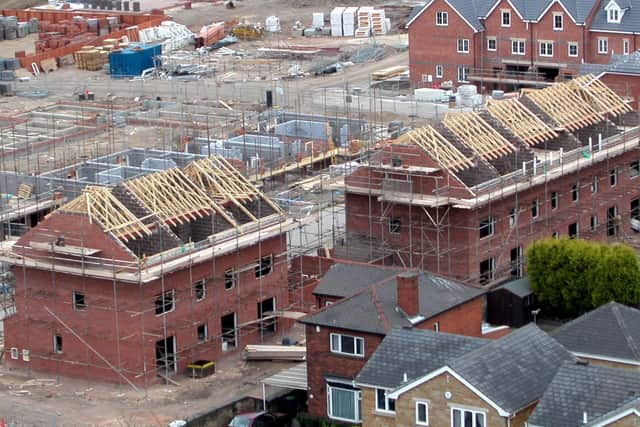Economic growth and jobs dominate talks on 10,000 new Calderdale homes hearing
and live on Freeview channel 276
A heavily debated part of the session raised the issue of what impact the COVID-19 pandemic would have on the council’s proposals.
Planning Inspector Katie Child opened phase two of the hearings, being conducted by Zoom calls and screened via Calderdale Council’s Youtube channel, into the plan which will determine where new homes and businesses might be built in Calderdale over the next 15 years.
Advertisement
Hide AdAdvertisement
Hide AdShe said she had carried out most site visits and would complete these after the hearings.


The council’s Planning lead, Richard Seaman, said Calderdale’s Public Health director had said wealth and health were two sides of the same coin and it was important to get this right in the Local Plan.
“Many people live in homes and work in places that aren’t fit for purpose.
“Calderdale aims to meet these challenges head on,” he said.
Advertisement
Hide AdAdvertisement
Hide AdIn the last couple of years Calderdale had been near the bottom of the Government’s housing delivery league, partly due to constraints on the supply side of land and out of date housing policies – the Local Plan sought to remedy this.
Ms Child said the session would explore the higher number of homes which would be needed because of the council’s economic projections.
“Is it your intention to retain your economic ambition?” she said.
Patrick Bowes, of West Yorkshire Combined Authority, supported the council and said even in the most pessimistic predicted circumstances, employment was expected to grow in Calderdale.
Advertisement
Hide AdAdvertisement
Hide AdFor the council, Fiona Thurlbeck said five towns – Elland, Halifax, Brighouse, Todmorden and Sowerby Bridge – were looking at substantial investment.
But Coun Steven Leigh (Ryburn), Conservative group leader on Calderdale Council, said the pandemic could not be ignored.
“Rate of economic growth assumed will not be as assumed. It changes absolutely everything,” he said.
Co-ordinator of Calderdale Friends of the Earth, Anthony Rae, said previous serious economic impacts had seen the economy contract.
Advertisement
Hide AdAdvertisement
Hide Ad“The conclusion we draw is that the employment strategy should be about retention and consolidation, not expansion,” he said.
He said the council had not considered alternative options including the Inspector’s offered option to reduce its growth aspirations – and in doing so reduce the number of new houses which would be needed.
Representing a consortium of builders, James Hall disagreed: “We very much hope the job market will recover quickly.
“Interest in the housing market is still pretty buoyant – we are planning positively.”
Advertisement
Hide AdAdvertisement
Hide AdThe Green Party’s Martin Hey responded: “You are mistaking the housing market for the economy, they are two different things.”
Nick Pleasant of NJL, speaking for Clifton Village Neighbourhood Forum, said there were concerns over the deliverability of growth, not just because of the ongoing pandemic effect but also the coming impact of Brexit.
Brian Crossley of Shelf and Northowram Local Plan Forum said he had not heard much discussion about jobs being done differently, for example working from home.
If new jobs were not forthcoming new homes would be for people working elsewhere, not in Calderdale.
Advertisement
Hide AdAdvertisement
Hide Ad“We’re building houses not for people in Calderdale but migrants who are going to come into the borough, and the people who are unemployed now will still be unemployed in 15 years’ time,” said Mr Crossley.
The Local Plan – Government says every authority has to have one – will identify sites where new homes and businesses might be built into the 2030s.
The council late last year submitted proposals for a ten, rather than 15, year format with new home numbers needed reviewed after ten years.
This would mean the council building 9,970 homes over a decade, when the position would be reassessed to see how many new homes, if any, might still be needed.“